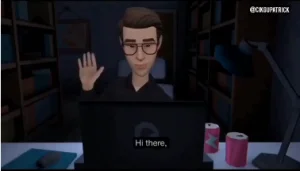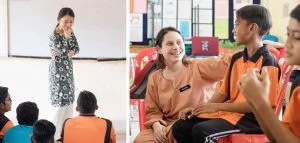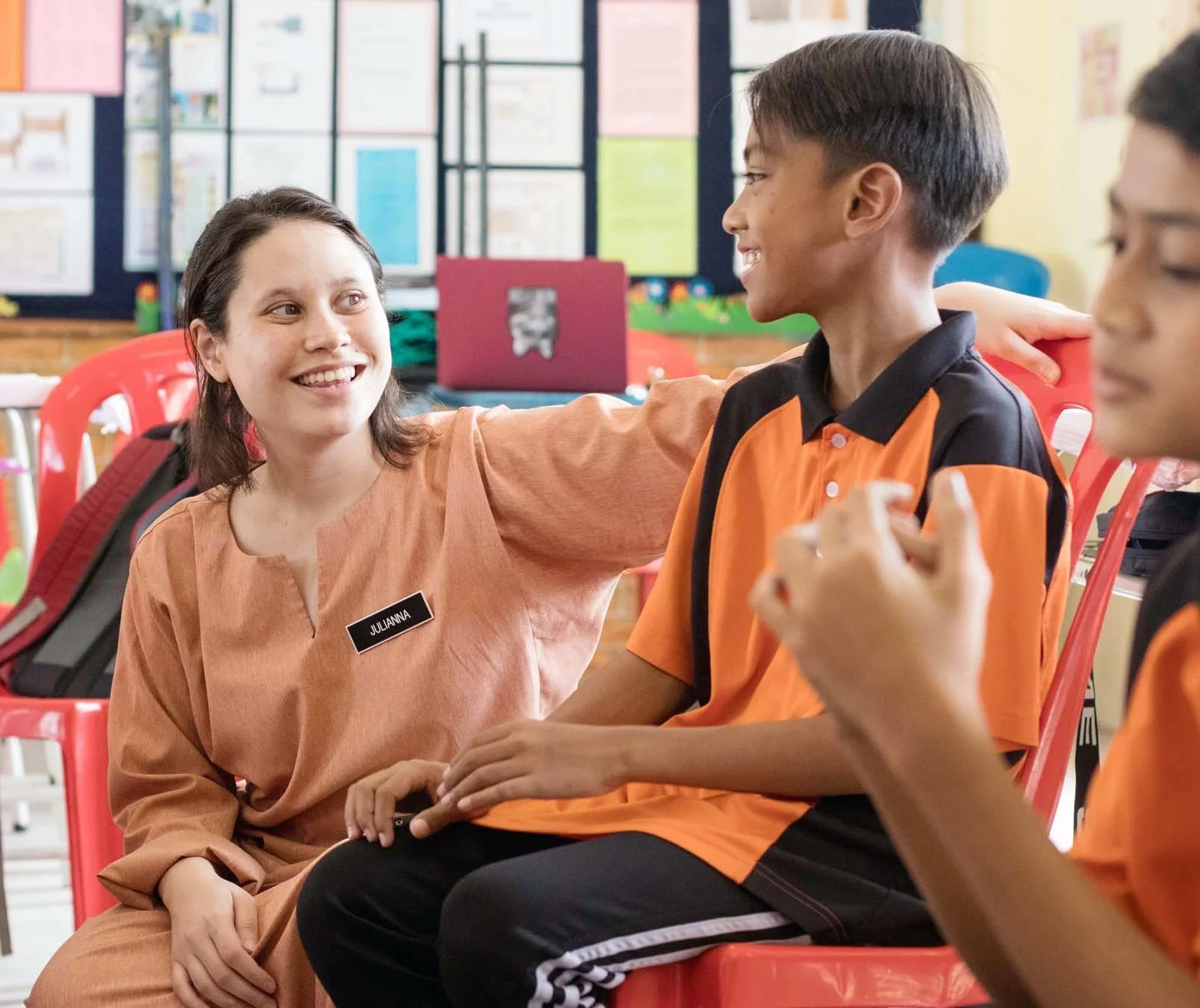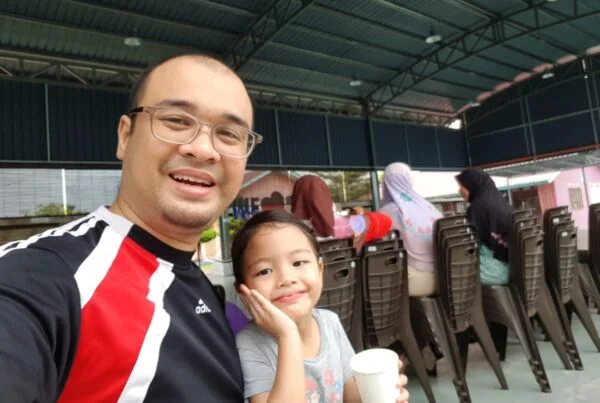Although the current situation has presented an opportunity for parents to get involved in their children’s learning, they are limited due to the many tasks they have to deal with ranging from housekeeping to adapting to working from home. In response to this, educators are stepping up, bearing the full responsibility of ensuring learning goes on remotely with quality and efficiency. However, it is not an easy task for many teachers out there.
Managing online classrooms

Hilda (2019 Fellow)
Hilda is a Fellow from the 2019 cohort who graduated with a Bachelor of Social Science in Anthropology and Sociology from University Malaysia Sabah. She is well versed with online teaching materials and has a good grasp on various virtual learning platforms before the MCO started. Despite having the upper hand in transitioning into online lessons she shares an inside story of the immense technical challenges of teaching online, not to mention having to cater to different students’ needs.
“Imagine having 5 classes and around 30 students in each class. That’s 150 different types of issues and texts you got to deal with!
It starts with setting up Google Classrooms for every class that you teach. Then you communicate with your students about your Google Classroom, giving them log-in codes and instructions. Five minutes in and your phone is flooded with messages: “Teacher how?” “Teacher I can’t get in.” “Teacher I don’t understand.”
Screenshots of different issues continue to flood in. Students using personal emails, students missing a letter in the code, students who don’t know what Google Classroom or even Gmail is.
So you backtrack and start by explaining what Gmail is. How to download Google Classroom and sign in. Then there are students who have forgotten their email passwords. So you go back and forth with the school e-Learning administrator trying to get it reset.”
Aside from the technical issues for those who have access to Google Classroom, she shares issues of students having to share devices with their parents or have very limited data to join the virtual sessions. Taking into account the use of other learning tools such as Kahoot, Canvas and Quizzes, with the added pressure of the sheer number of students you have to deal with, it requires immeasurable patience, time and technical knowledge to manage classes as such.
Keeping students engaged with creative content
“I prefer to have a lesson with interesting animations in it. It does get a little boring after having long hours of online classes,” said 15-year old student Miithiilesh.
From the many text messages filled with homework and tasks, to blurry screens and laggy speeches during online classes, teachers are expected to still deliver engaging contents for students to keep their spirits up while learning online. Especially for students who are sitting for important national exams such as SPM and STPM, teachers are under more pressure of delivering the usual syllabus with quality and speed.
Patrick is a Fellow from the 2020 cohort who teaches English in a high-need school in KL.
“When the MCO was first introduced, I asked myself, how will this affect my teaching experience? If I were to teach online, how will my students react to it? Another concern for me is what about students who do not have internet access? It was a very confusing state for me but we are all trying to adapt to the situation.”
Abiding to his teaching rule “Learning should not be boring”, he has utilised the MCO as an opportunity to polish his content creation skills by creating animations as part of his online lessons.

Patrick turned himself into an animated character to teach English idioms.
“For one lesson with interactive content such as a video, I would take about 3-4 days to prepare, which includes browsing for resources and editing. Without editing, it takes about 1-2 days. In both cases, I spend most of my time brainstorming how to make my content relevant and fun to my students.”
As he has acknowledged, it requires time and collaborative effort to be pushing out highly engaging content. A simple 15-minute video lesson with the use of a pencil and paper takes 1 hour of preparation and at least 2 takes to record. Although these types of lessons may be more engaging for students, it is not always straightforward to prepare for certain subjects such as design technology, science, art, and physical education.
Reaching out to students
The Ministry of Education has conducted a survey involving 900,000 students and found that a staggering 37% of students do not have electronic devices to access learning, with 50% of these students from rural areas. (Source: MOE Survey, 2020)

2019 Fellows Lin Li (left) and Juliana (right)
These challenges are apparent in Semporna, where 2019 cohort Fellows Lin Li and Juliana teach. Almost half of their students have ‘disappeared” and are completely out of reach since the beginning of the MCO. As most of their students rely on the free 1GB data made available by telcos, Lin Li and Juliana have resorted to low-data text-based learning by delivering learning resources through WhatsApp in the form of tasks and short videos. Students are given a week to work on these tasks and will be given feedback through WhatsApp.
“They are still teenagers and would prefer using the free 1GB on social media or Youtube rather than studying,” said Juliana. She is facing dwindling engagement and interest from her students with her lessons and urges for more means of support for learning. Lin Li shared the same concerns as her lessons are based on the voluntary responsiveness of her students on WhatsApp. It is hard to stay engaged without violating their privacy as the students themselves may be facing their own challenges back home which may hinder their ability to access learning.
What are we doing about this?
At Teach For Malaysia, we are focused on working together with our students, teachers, school leaders and parents to co-create meaningful solutions to the many challenges that have emerged during this time of uncertainty. We have partnered with HP Malaysia, YTL Foundation, Bain & Company to improve access to education by distributing computers for students, providing learning resources, creating distance learning strategies for educators and many other collaborative initiatives. We are also supporting our Fellows in this transition through a Distance Learning Strategy.
As we are looking forward to the reopening of schools, our teachers will have to face yet another challenge teaching in these “new schools”. Through a research done by Edvolution Enterprise, 84% of teachers are worried about the health and safety of the students in these new schools. Schools and school leaders will have to make drastic changes to ensure the safety of students and teachers when schools reopen. TFM will continue to work together to reimagine education after the MCO period to ensure all students can learn safely and have access to an excellent education.







